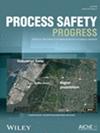Leading by example: Culture, leadership, and accountability
IF 1
4区 工程技术
Q4 ENGINEERING, CHEMICAL
引用次数: 0
Abstract
Process safety practices and management systems have been in place for many years and have been widely credited for reductions in major accident risk. However, many organizations today are challenged by inadequate management system performance, resource pressures, and stagnant or declining process safety performance. Systems for managing process safety have not been fully successful in some organizations due to a variety of issues; major, frequent contributors include a lack of senior management commitment and poor safety culture. Senior management commitment and safety culture are inextricably linked, as the quality of an organization's leadership and their commitment will drive or limit the culture. Changes to improve management systems are relatively easy to implement, but extremely difficult to sustain without strong leadership commitment and total line management support. It is not just a case of changing the systems, but also changing the safety culture of the organization. Safety culture tends to be the result of everything that happened or failed to happen and represents the organization's shared values, beliefs, attitudes, and behaviors with respect to safety (occupational safety and process safety). To change the safety culture and sustain the change, leadership must care and以身作则:文化、领导力和问责制
工艺安全实践和管理系统已实施多年,在降低重大事故风险方面广受赞誉。然而,如今许多组织都面临着管理系统性能不足、资源压力以及工艺安全性能停滞或下降的挑战。由于各种问题,工艺安全管理系统在一些组织中并不完全成功,其中经常出现的主要问题包括缺乏高级管理层的承诺和安全文化不佳。高级管理层的承诺与安全文化密不可分,因为组织领导层的素质及其承诺将推动或限制安全文化的发展。改进管理系统的变革相对容易实施,但如果没有领导层的坚定承诺和部门管理层的全面支持,就很难持续下去。不仅要改变系统,还要改变组织的安全文化。安全文化往往是已发生或未发生的一切的结果,代表着组织在安全(职业安全和工艺安全)方面的共同价值观、信念、态度和行为。要改变安全文化并使其持续下去,领导层必须关心并明确表示他们一直都在关心。只有这样,组织才能开始改善其文化。任何组织的第一步都是识别和了解其现有文化。本文将介绍健全的安全文化的基本特征,以及根据在组织不同层面使用的文化、领导力和问责制(CLA)审查协议来识别安全文化弱点的方法。此外,还将讨论改变和维持改进后的安全文化所涉及的其他关键步骤。
本文章由计算机程序翻译,如有差异,请以英文原文为准。
求助全文
约1分钟内获得全文
求助全文
来源期刊

Process Safety Progress
工程技术-工程:化工
CiteScore
2.20
自引率
10.00%
发文量
99
审稿时长
6-12 weeks
期刊介绍:
Process Safety Progress covers process safety for engineering professionals. It addresses such topics as incident investigations/case histories, hazardous chemicals management, hazardous leaks prevention, risk assessment, process hazards evaluation, industrial hygiene, fire and explosion analysis, preventive maintenance, vapor cloud dispersion, and regulatory compliance, training, education, and other areas in process safety and loss prevention, including emerging concerns like plant and/or process security. Papers from the annual Loss Prevention Symposium and other AIChE safety conferences are automatically considered for publication, but unsolicited papers, particularly those addressing process safety issues in emerging technologies and industries are encouraged and evaluated equally.
 求助内容:
求助内容: 应助结果提醒方式:
应助结果提醒方式:


